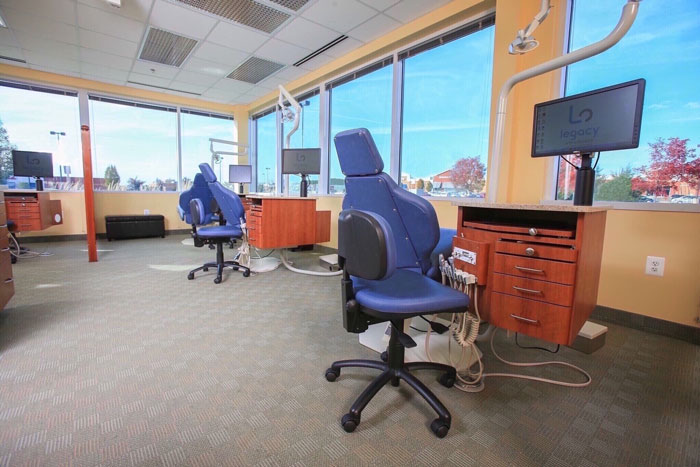Our Legacy Orthodontics Statements
Table of ContentsThe Definitive Guide for Legacy OrthodonticsThe 6-Minute Rule for Legacy OrthodonticsThe Of Legacy OrthodonticsThe Facts About Legacy Orthodontics RevealedThe Single Strategy To Use For Legacy Orthodontics
At Advanced Orthodontics, we give people with a holistic therapy experience. In addition, we provide flexible therapy schedules, versatile repayment choices and an enjoyable, pleasurable experience. orthodontics. Phone call ( 480) 357-4900 today for more details and routine a visit.An orthodontist is a dental professional educated to detect, prevent, and treat teeth and jaw irregularities. They deal with existing problems and are educated to recognize issues that might establish in the future. Orthodontists collaborate with individuals of all ages, from youngsters to adults. Individuals often connect a perfect smile with health.
Malocclusion, or misaligned teeth, can result in oral problems, consisting of dental caries, gum illness, and challenging or unpleasant chewing. However not everyone is born with straight teeth. If you have a poor bite or huge rooms between your teeth, you might desire to seek advice from a dental expert focusing on orthodontic care.
Top Guidelines Of Legacy Orthodontics
( Photo Debt: DigitalVision/Getty Images) Orthodontists make use of dealt with and removable dental devices, like braces, retainers, and bands, to alter the setting of teeth in your mouth. Orthodontic therapy is for dental problems, including: Misaligned teethBite troubles, like an overbite or an underbiteCrowded teeth or teeth that are as well much apartJaw misalignmentThe objective of orthodontic therapy is to boost your bite.
A healthy and balanced bite guarantees you can consume, eat, and speak appropriately. While you could think about orthodontists as mostly for youngsters or teens who require braces, they can remedy oral problems at any type of age. Orthodontists participate in university, oral school, and orthodontic institution. After college graduation, they invest 2 or 3 years in an orthodontic residency program.
All orthodontists are dentists, but not all dental experts are orthodontists. Orthodontic residency programs use extensive, focused direction for dental specialists. They concentrate on 2 locations: How to correctly and safely move teeth How to appropriately assist development in the teeth, jaw, and faceOnce an orthodontist has actually completed training, they have the option to become board accredited.
The Buzz on Legacy Orthodontics
Imbalance, or malocclusion, is one of the most common reason individuals see an orthodontist. It is hereditary and is the result of dimension distinctions in between the top and lower jaw or between the jaw and teeth. Malocclusion leads to tooth congestion, a misshapen jaw, or uneven bite patterns. Malocclusion is typically treated with: Your orthodontist connects metal, ceramic, or plastic square bonds to your teeth.
Some individuals require a headgear to aid relocate teeth into line with stress from outside the mouth. A retainer is a customized tool that keeps your teeth in location.
They can develop additional room in the mouth without having to pull teeth. Orthodontists make use of cables, medical screws, or plates to support your jaw bone.
You might require to see an orthodontist if you have: Crowding or otherwise enough area for every one of your teethOverbite, when your top teeth come over your bottom teethUnderbite, when your bottom teeth are as well much forwardSpacing or problems with gapsCrossbite, which is when your upper teeth fit behind your bottom teeth when your mouth is closedOpen bite or a vertical void in between your front base and top teethMisplaced midline, when the facility of your base and top teeth do not align Correcting a dental malocclusion can: Make attacking, chewing, and talking easierImprove the proportion of our face and your general appearanceEase discomfort from temporomandibular joint conditionsDifferent your teeth and make them easier to clean, aiding protect against dental cavity or tooth cavities It's usually a dental practitioner that initially notices misaligned teeth during a regular examination.
An Unbiased View of Legacy Orthodontics

Throughout your very first orthodontic examination, you'll likely have: An oral examPhotos taken of your face and smileDental X-raysPanoramic (360 degree) X-rays of your face and headImpressions to develop mold and mildews of your teethThese tests will certainly assist your orthodontist know how to proceed with your treatment. leesburg orthodontist. An orthodontist is a dentist that's had training to treat your teeth and jaw
An orthodontist is concentrated on your bite, so something like a damaged tooth would certainly be dealt with by a dental professional. Orthodontists are focused on your bite, or the way your teeth fit with each other, and the straightness of your teeth.
Ever questioned exactly how celebrities always seem to have perfectly aligned teeth? Orthodontists are oral specialists that focus on remedying irregularities in the teeth and jaws.
Some Ideas on Legacy Orthodontics You Should Know

, orthodontists have a diverse toolkit at their disposal. These reliable braces utilize a system of brackets bonded to the teeth and linked by cables.
These removable trays are custom-made to progressively change the teeth's placement. In situations of narrow jaws, palatal expanders can be used to create area for appropriate tooth positioning.